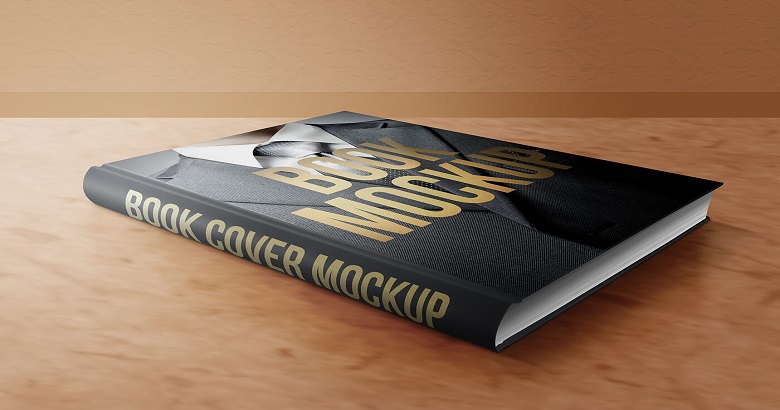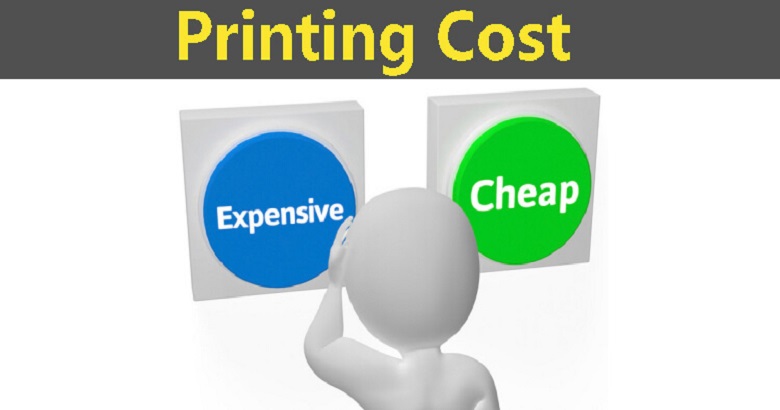Publishing a book has never been more accessible, thanks to advancements in self-publishing platforms and print-on-demand services. However, understanding the costs involved is crucial for any aspiring author. From editing and cover design to printing and marketing, numerous expenses can add up quickly. In this comprehensive guide, we will break down the different costs associated with printing and publishing your own book and provide tips on how to manage your budget effectively.
Editing
Developmental Editing
Developmental editing focuses on the structure, content, and overall flow of your book. This type of editing is crucial for ensuring that your story or message is clear and engaging. Developmental editors typically charge between $0.03 and $0.08 per word, depending on their experience and the complexity of the manuscript.
Developmental editing involves a deep dive into the core of your manuscript, examining elements like plot structure, character development, pacing, and overall coherence. It’s a collaborative process where the editor might suggest significant changes, additions, or deletions to improve the narrative or argument. For instance, if you’re writing a novel, a developmental editor might help you refine character arcs or tighten plotlines. For non-fiction, they might assist in reorganizing chapters for better flow and clarity.
Copy Editing
Copy editing is a more detailed review of your manuscript, focusing on grammar, punctuation, and consistency. Copy editors usually charge between $0.02 and $0.05 per word. While it might be tempting to skip this step, a well-edited book is essential for maintaining credibility and reader engagement.
Copy editing ensures that your manuscript adheres to grammatical rules and stylistic guidelines. This process involves correcting spelling errors, grammatical mistakes, and inconsistencies in tense or point of view. Copy editors also watch for repetitive phrases, awkward sentence structures, and factual inaccuracies. Their goal is to ensure your writing is clear, concise, and professional.
Proofreading
Proofreading is the final step in the editing process, catching any remaining typos and errors. Proofreaders generally charge between $0.01 and $0.03 per word. This step is crucial for ensuring a polished final product.
Proofreading involves a meticulous review of the final manuscript to catch any overlooked errors. This includes minor typos, punctuation mistakes, and formatting inconsistencies. Proofreaders ensure that your manuscript is as error-free as possible before it goes to print or digital publication.
Total Estimated Editing Costs
For a 70,000-word manuscript, you might expect to pay:
- Developmental Editing: $2,100 – $5,600
- Copy Editing: $1,400 – $3,500
- Proofreading: $700 – $2,100
Total Editing Costs: $4,200 – $11,200
Cover Design
Professional Cover Design
A professionally designed cover is essential for attracting readers. Professional cover designers typically charge between $300 and $1,000. This cost can vary based on the complexity of the design and the designer’s experience.
A captivating cover design can significantly impact your book’s success. It’s often the first thing potential readers see and can determine whether they pick up your book or scroll past it. Professional designers understand the market trends and know how to create visually appealing covers that convey the essence of your book. They consider elements like typography, color schemes, and imagery to craft a cover that stands out in both digital and physical bookstores.
DIY Cover Design
If you’re on a tight budget, you can create your own cover using tools like Canva. However, investing in a professional cover designer is generally recommended to ensure your book stands out in the market.
While DIY tools like Canva offer templates and design elements, they may not provide the same level of customization and polish as a professional designer. If you choose to design your own cover, it’s crucial to research best practices and seek feedback from potential readers or design-savvy friends to ensure your cover looks professional.
Total Estimated Cover Design Costs
- Professional Cover Design: $300 – $1,000
Interior Formatting
Professional Formatting
Interior formatting ensures that your book’s text is appropriately aligned, visually appealing, and meets industry standards. Professional formatters usually charge between $200 and $500 for a standard novel-length book.
Interior formatting involves arranging your manuscript’s text, images, and other elements to create a reader-friendly layout. This process ensures consistent fonts, margins, spacing, and chapter headings. Proper formatting enhances the reading experience and ensures that your book looks professional, whether in print or digital form. Formatters are familiar with industry standards and can tailor your book to meet the requirements of different publishing platforms.
DIY Formatting
Many authors choose to format their books using tools like Vellum or Scrivener. While these tools have a one-time cost (Vellum: $199, Scrivener: $49), they can save money in the long run if you plan to publish multiple books.
DIY formatting tools offer templates and automated features that simplify the formatting process. They are particularly useful for authors who plan to publish multiple books, as the initial investment can be spread over several projects. However, these tools require a learning curve, and the results may not be as polished as those from a professional formatter.
Total Estimated Interior Formatting Costs
- Professional Formatting: $200 – $500
ISBN and Barcode
ISBN Purchase
An ISBN (International Standard Book Number) is required for distributing your book through traditional and online retailers. In the United States, a single ISBN costs $125, but purchasing a block of 10 ISBNs can reduce the cost to $29.50 per ISBN.
An ISBN is a unique identifier for your book, used by retailers, libraries, and distributors to track and catalog it. It’s essential for ensuring your book is properly listed and searchable in databases. Purchasing a block of ISBNs is cost-effective if you plan to publish multiple books, allowing you to assign unique identifiers to each edition (e.g., hardcover, paperback, eBook).
Barcode Purchase
A barcode is necessary for physical book sales and can be purchased for around $25.
A barcode, often included with the ISBN, is used by retailers to scan and track sales. It’s a crucial component for physical book distribution, enabling efficient inventory management and sales tracking.
Total Estimated ISBN and Barcode Costs
- ISBN and Barcode: $150 – $200
Printing Costs
Print-on-Demand Services
Print-on-demand (POD) services like Amazon KDP and IngramSpark allow you to print books as they are ordered, eliminating the need for large upfront printing costs. POD printing costs depend on factors like page count, trim size, and color options. For a 300-page black-and-white paperback book, expect to pay around $4 – $6 per copy.
POD services revolutionize the publishing landscape by minimizing financial risk. You only pay for the books you sell, avoiding the need for bulk printing and storage. This model is ideal for new authors or those testing the market. POD services also handle distribution, shipping, and customer service, simplifying the publishing process.
Bulk Printing
If you anticipate high sales volumes, bulk printing can reduce the per-unit cost. For example, printing 1,000 copies of a 300-page paperback book might cost around $2 – $3 per copy. However, this option requires a significant upfront investment and storage space.
Bulk printing is cost-effective for authors with established readerships or confirmed large orders, such as for book tours or special events. While it reduces the per-unit cost, it requires careful planning and upfront investment. Additionally, you’ll need to manage storage and distribution logistics.
Total Estimated Printing Costs
- Assuming POD for 100 copies
- Printing Costs: $400 – $600
Distribution and Marketing
Distribution Costs
Self-publishing platforms like Amazon KDP and IngramSpark charge a fee for distributing your book to various retailers. These fees typically range from $0 to $49, depending on the platform and distribution options.
Distribution costs vary based on the platform and the extent of distribution you choose. Amazon KDP offers free distribution but takes a percentage of each sale, while IngramSpark charges setup fees but provides broader distribution options, including bookstores and libraries.
Marketing Costs
Effective marketing is crucial for reaching your target audience. Marketing expenses can vary widely, from $100 for basic social media advertising to $5,000 or more for comprehensive marketing campaigns, including book tours, email marketing, and promotional materials.
Marketing your book is essential for visibility and sales. Basic marketing might include social media ads, book giveaways, and blog tours. More comprehensive strategies involve professional book publicists, paid advertising campaigns, and attendance at book fairs or conferences. Successful marketing requires a mix of tactics tailored to your target audience and budget.
Total Estimated Distribution and Marketing Costs
- Distribution Costs: $0 – $49
- Marketing Costs: $100 – $5,000
Total Estimated Costs
Low-End Estimate
- Editing: $4,200
- Cover Design: $300
- Interior Formatting: $200
- ISBN and Barcode: $150
- Printing: $400
- Distribution and Marketing: $100
Total Low-End Estimate: $5,350
High-End Estimate
- Editing: $11,200
- Cover Design: $1,000
- Interior Formatting: $500
- ISBN and Barcode: $200
- Printing: $600
- Distribution and Marketing: $5,049
Total High-End Estimate: $18,549
Tips for Managing Costs
Budget Wisely
Careful budgeting is essential when self-publishing. Prioritize essential services like editing and cover design, which significantly impact your book’s quality and marketability. Create a detailed budget plan, listing all potential expenses and allocating funds accordingly. Regularly review and adjust your budget as needed.
Seek Professional Help
While DIY options are available, professional services often yield better results and can save time and effort in the long run. Experienced editors, designers, and formatters have the skills and knowledge to enhance your book’s quality, increasing its chances of success. Consider your strengths and weaknesses, and delegate tasks that require expertise.
Utilize Free Resources
Leverage free resources like writing communities, beta readers, and online tutorials to improve your manuscript and marketing strategies. Writing communities can provide valuable feedback and support, while beta readers offer insights from a reader’s perspective. Online tutorials and courses can help you learn new skills and improve your self-publishing knowledge.
Negotiate Rates
Don’t hesitate to negotiate rates with freelancers and service providers. Many professionals are willing to work within your budget, especially if you offer long-term collaboration or referrals. Be transparent about your budget constraints and explore flexible payment options.
Plan for Marketing
Allocate a portion of your budget for marketing to ensure your book reaches its intended audience. Effective marketing strategies include social media promotion, email newsletters, book signings, and collaborations with bloggers or influencers. Develop a marketing plan outlining your goals, target audience, and tactics, and adjust it based on results.
Conclusion
Printing and publishing your own book involves several costs, from editing and design to printing and marketing. By understanding these expenses and planning your budget accordingly, you can successfully navigate the self-publishing process and bring your book to market. While the initial investment may seem daunting, the potential rewards of sharing your work with readers worldwide can make it all worthwhile.
Self-publishing offers unparalleled creative control and potentially higher royalties compared to traditional publishing. However, it requires significant effort and investment upfront. By carefully managing your budget and investing in quality services, you can produce a professional, marketable book that resonates with readers.
Frequently Asked Questions
1. Can I publish a book without spending any money?
While it’s possible to publish a book with minimal costs by relying on free resources and DIY methods, investing in professional services like editing and cover design can significantly improve the quality and success of your book. Free resources like beta readers and writing groups can provide valuable feedback, but professional services ensure your book meets industry standards.
2. What is the most critical expense in self-publishing?
Editing is often considered the most critical expense, as it directly affects the quality and readability of your book. A well-edited book is more likely to receive positive reviews and attract readers. Skipping professional editing can lead to negative reviews and lower sales, making it a crucial investment for self-published authors.
3. How can I save money on printing costs?
Utilizing print-on-demand services can help you save money on printing costs by allowing you to print books as they are ordered, eliminating the need for large upfront investments and storage space. Additionally, POD services handle distribution and shipping, reducing logistical challenges. For authors with high sales volumes, bulk printing can lower per-unit costs but requires careful planning.
4. Do I need an ISBN for my book?
An ISBN is necessary if you plan to distribute your book through traditional and online retailers. It helps identify your book and track sales. However, some self-publishing platforms provide a free ISBN, although it may limit your distribution options. If you plan to publish multiple formats or editions, purchasing your own ISBNs offers greater flexibility and control.
5. How much should I budget for marketing my book?
Marketing budgets can vary widely depending on your goals and strategies. A basic marketing plan might cost around $100, while a more comprehensive campaign can range from $1,000 to $5,000 or more. It’s essential to allocate a portion of your budget for marketing to ensure your book reaches its target audience. Effective marketing can significantly impact your book’s success, so consider investing in a mix of promotional tactics and monitoring their effectiveness.






